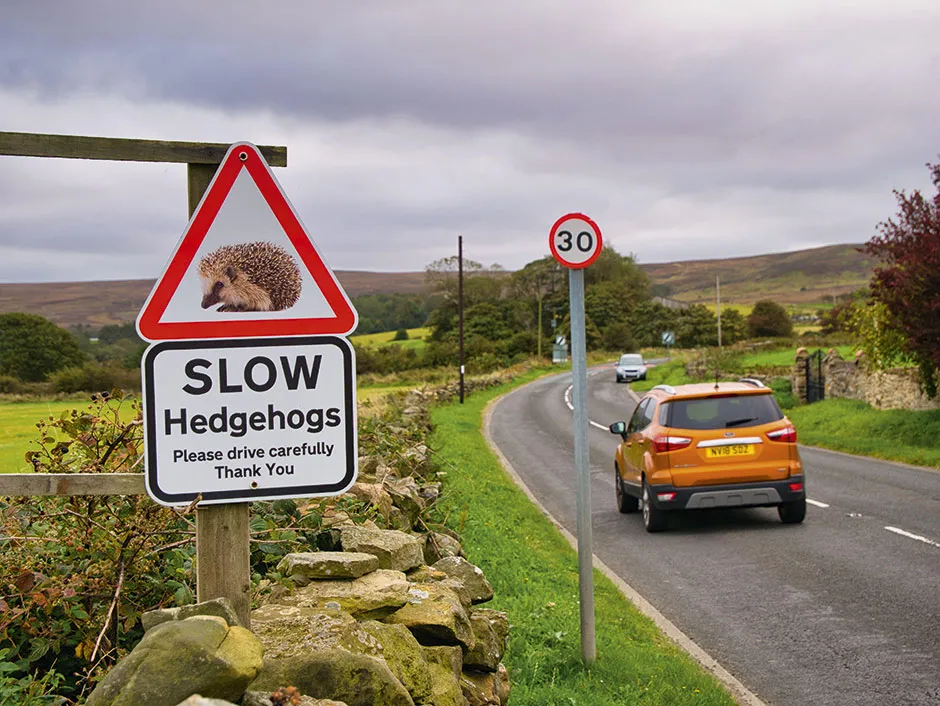News stories about endangered wildlife have become sadly familiar, with many biologists now saying we are living through the planet’s sixth mass extinction because of the rate at which species are disappearing due to human activity.
Recently, it was the hedgehog’s turn to make headlines. Having been assessed as vulnerable to extinction in the UK, the prickly insect-muncher was added to the Red List of Britain’s mammals, one of many official inventories of at-risk species produced by the International Union for Conservation of Nature (IUCN). Fortunately for the hedgehog, there is plenty we can still do to help.
Could the hedgehog go extinct?
Unlikely. Conservationists working for the IUCN determine each species’ threat level according to specific criteria, and at the moment the European hedgehog, Erinaceus europaeus, is not endangered (in danger of vanishing in the wild). In parts of its huge range, which stretches east to forests around Moscow and south to the olive groves of the Mediterranean, it remains locally common.
But the species faces a growing number of severe threats. A 2018 report by the People’s Trust for Endangered Species and the British Hedgehog Preservation Society estimated that over half of the hedgehogs in rural Britain, and a third of the urban ones, have gone since 2000 alone. Such is the speed of this population decline, the species meets the threshold for ‘Vulnerable’ status in the UK.
Read more about British wildlife:
- What wildlife can I see in British hedgerows?
- The Urban Birder: What wildlife can city-dwellers see?
What are the main threats to hedgehogs?
Agricultural intensification since WWII has transformed vast swathes of land, removing the ‘patchwork quilt’ of hedges, woods and small fields in which hedgehogs thrive, and replacing it with huge, unvarying monocultures of cereal crops or chemically improved pasture. Insect numbers have crashed due to pesticide use, depriving hedgehogs of prey.
Meanwhile, contemporary garden design does them no favours. Decking, patios, artificial turf, planters and a general obsession with tidiness in our manicured outdoor spaces – some conservationists wryly refer to this trend as ETD, or ‘ecological tidiness disorder’ – leave them without enough food and shelter.
Another major cause of mortality is roadkill. A recent study by researchers at Nottingham Trent University suggested that up to 335,000 hedgehogs die on UK roads every year.
What do hedgehogs eat?
Hunting mainly by smell, hedgehogs sniff out a wide range of invertebrate prey, from beetles and bugs to earwigs, woodlice, earthworms, millipedes, slugs, snails and various insect larvae. They love caterpillars and the larvae of craneflies (daddy longlegs), which burrow in soil.
Given the chance, hedgehogs will snaffle birds’ eggs in summer, as well as windfall fruit. All in all, hedgehogs are natural pest controllers, beneficial to gardeners and farmers alike.
Although a wild-foraged diet suits hedgehogs best, if you have them in the area, there’s no harm in putting out a small bowl of natural food such as dried mealworms, or meat-based cat or dog food. Never offer milk, as hedgehogs are lactose intolerant. Carbohydrate-heavy bread, pizza and biscuits, which have limited nutritional value, are another no-no.
Supplementary food is most useful in late summer and autumn, when hogs are fattening up prior to hibernation. You may also attract foxes, and that’s fine – research into fox-hedgehog interactions by the University of Brighton shows that these mammals usually co-exist in gardens.

How can I make my garden hedgehog-friendly?
The dramatic changes in farming practices mean that urban green space provides an increasingly important refuge for thesecharismatic creatures. You can help by gardening in a more hog-friendly way.
Allow your lawn to grow longer (apart from being less work, it will also be more resilient to drought), let flowerbeds become messier, leave fallen leaves where they are and uncover any compost heaps (fertile foraging grounds for hedgehogs). Avoid using lawn feeds, weedkillers and slug pellets: the wilder and more natural your garden, the better.
If you have a pond, add some stones or a ramp at the edge so hedgehogs can drink safely. Many custom-made hedgehog homes or ‘hogitats’ are now available, designed to accommodate their winter hibernation, but steer clear of anything expensive or twee. A pile of dry leaves, moss, straw and sticks under bushes in a quiet corner of the garden can be equally effective.
Read more fromReality Check:
- Plug-in hybrid cars: Are they really the eco-friendly choice?
- COVID-19: How many people have died because of the pandemic?
What else can I do to help hedgehogs?
Hedgehogs wander up to two kilometres a night in search of food and mates, so need access to large areas of connected habitat. The suburban maze of gardens divided by countless impenetrable fences and walls is therefore bad news, but a simple fix is to create CD-sized holes at ground level, enabling them to roam at will.
Almost a million people have signed a petition asking the UK Parliament to make these hedgehog highways a requirement in all new housing developments. The hedgehog’s enduring popularity – it won a 2013 poll to find Britain’s favourite wild animal by a landslide – could prove to be its saviour. If you’re worried about a hedgehog, visit britishhedgehogs.org.uk for advice.
Visit the BBC's Reality Check website at bit.ly/reality_check_ or follow them on Twitter@BBCRealityCheck

